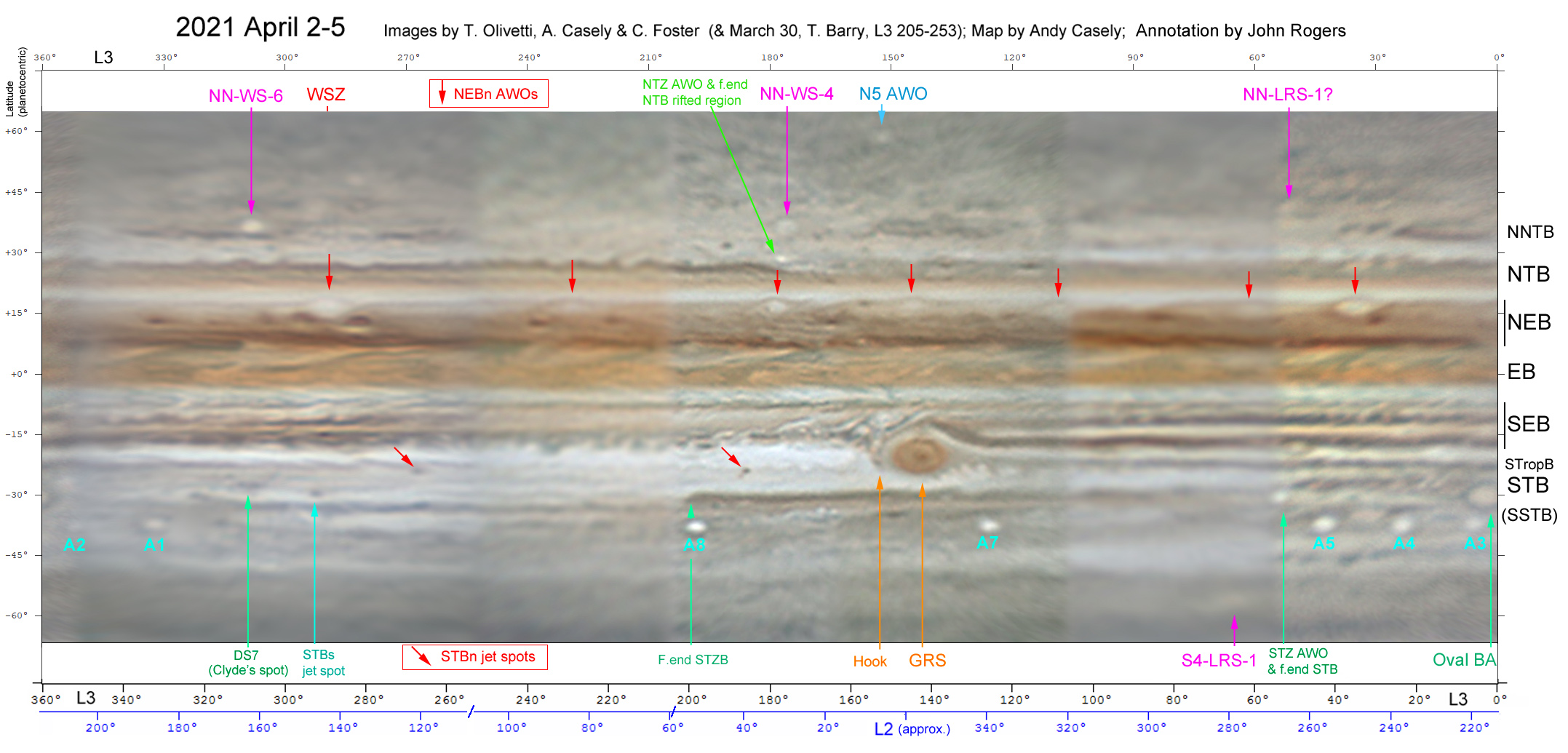Jupiter in 2021, Report no.1: View at the start of the apparition
Several observers in the south are now getting very good images as the planet draws away from the sun in the mornings. On the attached map from 2021 April 2-5, compiled by Andy Casely, the main recognisable features are labelled. (Background to the following notes will be given in a final report on the 2020 apparition that is now in preparation.)
All the long-lived anticyclonic white ovals (AWOs) of the N5, N2 and S2 domains are retrieved.
The NTB is now largely quiet, with a dark grey N component and a light ochre (reddish) S component. The long-lived rifted region is still present, as in late 2020, with a well-defined f. end alongside a small bright AWO in the NTZ. Some sectors of NTBn show well-defined waves.
The NEB has the classic appearance a year after its broadening event: the expanded N edge is partially faded again, and a prominent array of AWOs and barges has appeared. There are at least seven AWOs (of which White Spot Z is the only one positively identified from last year), and even more dark brown barges.
The EZ still has orange coloration, which has re-intensified to become darker and more vivid than it was a year ago. It is still concentrated in a broad Equatorial Band but also covers much of the EZ(N) less strongly.
The SEB is not much changed. There is still a small area of rifting f. the GRS. There are various spots on SEBs and Shinji Mizumoto recently tracked one entering the Red Spot Hollow. The GRS is as small as ever (well monitored by Mizumoto). Notably, a long dark S. Tropical Band has emerged from a dark ‘hook’ and ‘collar’ around the GRS during solar conjunction. It was recorded by JunoCam at PJ23 on Feb.21, and Casely & Mizumoto calculated that it could have been initiated by the arrival of a large SEBs ring around Jan.25.
The STB latitudes around oval BA have shown interesting changes. BA still appears almost white but has slight colour in some images, and more in JunoCam’s at PJ32. BA had a rapid drift rate during solar conjunction, and the prominent dark spot DS6 has disappeared (possibly because BA got too close to it). However, DS7 (‘Clyde’s spot’) persists as a dark streak. F. BA, the dark turbulent STB segment has grown to 45 deg long (as it was in the closeup images at PJ32). There is still a very long, very dark STZ Belt f. the STB segment.
–2021 April 13.

| The British Astronomical Association supports amateur astronomers around the UK and the rest of the world. Find out more about the BAA or join us. |
